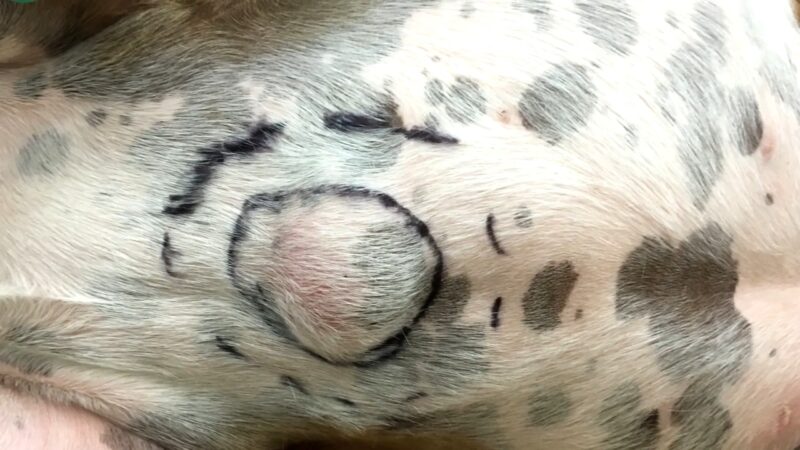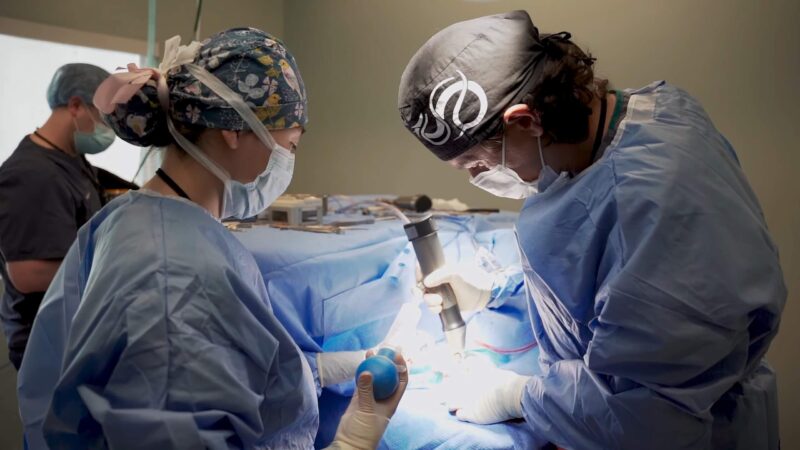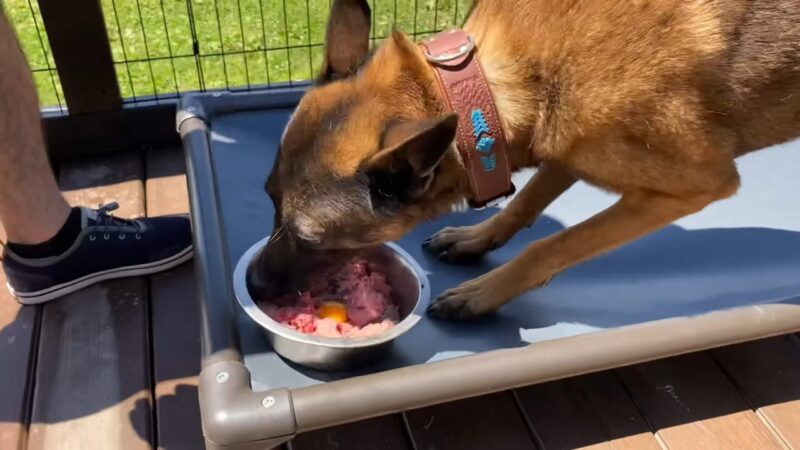Mast cell tumors (MCTs) represent a significant concern for dog owners worldwide, being one of the most common skin cancers in dogs. These tumors arise from mast cells, which are a type of white blood cell found in various tissues throughout the body.
If your dog has been diagnosed with mast cell tumors, it is crucial for you to prepare for the journey ahead and make informed decisions about your beloved pet’s care.
Key Takeaways
- Survival times of dogs with MTC vary widely based on tumor grade, staging, treatment response, and the dog’s overall health, ranging from a few months to several years.
- The extent of cancer spread, or staging, plays a crucial role in prognosis, where localized tumors offer a better prognosis compared to metastasized tumors.
- Various treatments, including surgery, chemotherapy, radiation therapy, and newer options like tyrosine kinase inhibitors, can influence life expectancy.
How Long Will a Dog With MCT Live?
The life expectancy of dogs diagnosed with mast cell tumors (MCTs) varies significantly based on several factors, including the tumor’s grade, stage, location, and the overall health of the dog. Here’s a breakdown of how these factors influence life expectancy:
| Tumor Grade | Characteristics | Prognosis | Survival Time |
| Grade I | Well-differentiated, slow-growing, less likely to spread. | Best prognosis, with many dogs living years beyond diagnosis. | Often extends beyond four years with proper treatment. |
| Grade II | Moderately differentiated, can be locally invasive but has a lower risk of spreading. | More variable prognosis compared to Grade I. | Ranges from months to years, the median survival time is around four years with treatment. |
| Grade III | Poorly differentiated, rapid growth, high likelihood of spreading. | The poorest prognosis, a significantly shorter median survival time. | Without treatment, survival is a few months; with aggressive treatment, survival time rarely extends beyond a year. |
What Are Mast Cell Tumors?
Mast cell tumors (MCTs) in dogs are a type of cancer that originates from mast cells, which are integral components of the immune system and are heavily involved in allergic reactions.
These cells are packed with granules containing histamine, heparin, and other inflammatory mediators that, when released in excessive amounts by cancerous cells, can lead to a range of systemic effects.
MCTs can manifest anywhere on a dog’s body, though they are predominantly found on the skin, within the subcutaneous layer, or inside internal organs like the spleen, liver, or kidneys.
The Severity and Spread of Mast Cell Tumors
Mast cell tumors exhibit a wide spectrum of behavior, from benign growths that may never cause any problems to highly aggressive malignancies that can spread rapidly throughout the body. About half of these tumors are malignant, posing a significant risk of metastasis and requiring aggressive treatment.
The other half may grow slowly and remain confined to their original location, sometimes for the life of the dog. The difficulty in predicting the behavior of MCTs necessitates a proactive approach to treatment and monitoring, emphasizing the need for thorough diagnostic work to guide the management plan.
This variability also highlights the critical role of ongoing research in improving our understanding and treatment of MCTs in dogs.
Causes and Risk Factors
While the precise cause of mast cell tumors in dogs is still under investigation, it’s believed that a mix of genetic predispositions and environmental factors plays a role in their development.
Certain breeds like Boxers, Boston Terriers, Bull Terriers, and Labrador Retrievers have shown a higher propensity for developing MCTs, suggesting a genetic component. These tumors are more frequently diagnosed in middle-aged to older dogs, indicating age as a significant risk factor.
Despite extensive studies, no direct correlation has been established between the development of MCTs and the sex or reproductive status of dogs, pointing to the complex nature of cancer causation and the need for further research to identify preventable risk factors.
Symptoms to Watch For

The symptoms associated with mast cell tumors can be as varied as the locations in which they appear.
- Skin or subcutaneous tumors: often present as lumps that may be red, swollen, and itchy, reflecting the inflammatory effects of histamine release.
- Systemic symptoms: gastrointestinal upset, such as decreased appetite and diarrhea, and more severe effects like blood in the stool and issues with blood clotting.
Diagnosing Mast Cell Tumors

The process of diagnosing mast cell tumors typically starts with a fine needle aspirate and cytology, allowing for the microscopic examination of tumor cells. This initial step can often provide a rapid diagnosis, enabling swift action.
For tumors located internally, more sophisticated imaging techniques such as radiographs (X-rays) and ultrasound are employed to assess the extent of the disease. This diagnostic approach is crucial for staging the cancer, which in turn informs the treatment strategy and helps predict the prognosis.
The goal is to gather as much information as possible to tailor the treatment plan to the individual dog’s needs.
Treatment Options

The treatment landscape for mast cell tumors in dogs includes a variety of options tailored to the individual case. Surgery remains the cornerstone of treatment for localized tumors, aiming not only to remove the tumor but also a margin of healthy tissue to ensure complete excision.
For tumors that are not amenable to surgery or have metastasized, chemotherapy and radiation therapy offer alternative or adjunctive treatment modalities.
In addition to these treatments, paying attention to your dog’s behavioral cues, such as their vocalizations at night, is essential for addressing their overall comfort and stress levels.
Diet and Supplements

Nutrition plays a pivotal role in the management of dogs with cancer, including those diagnosed with mast cell tumors. A high-quality, balanced diet supports overall health and can help mitigate the side effects of cancer and its treatment.
For pet owners considering a raw food regimen as part of their dog’s cancer care, understanding the appropriate quantity of raw chicken to include can be crucial for maintaining nutritional balance and supporting their pet’s health.
The interest in low-carbohydrate and low-histamine diets reflects the growing recognition of the role of diet in cancer care, aiming to deprive cancer cells of their preferred energy source and reduce inflammation.
Supplementing with vitamins and minerals, such as vitamin D3 and magnesium, has shown promise in supporting the health of dogs with MCTs, though it’s essential to consult with a veterinarian before introducing any new elements to a dog’s diet.
FAQs
Can diet and lifestyle changes improve the prognosis for dogs with MCTs?
Diet and lifestyle changes can support overall health and may help improve a dog’s quality of life during treatment. However, these should complement, not replace, conventional treatments and always be discussed with a veterinarian.
How often should dogs in remission from MCTs be re-evaluated by a veterinarian?
Dogs in remission from MCTs should undergo regular veterinary check-ups every 3 to 6 months, or as recommended by their veterinarian, to monitor for any signs of recurrence.
Can MCTs recur after successful treatment?
Yes, MCTs can recur after treatment. The risk of recurrence depends on various factors, including the tumor’s grade, the completeness of the initial removal, and the dog’s overall health.
Is there a link between vaccinations and the development of MCTs in dogs?
Current scientific evidence does not establish a direct link between vaccinations and the development of MCTs in dogs. Vaccinations are crucial for preventing serious diseases, and any concerns should be discussed with a veterinarian.
Summary
We are all aware that facing a diagnosis of mast cell tumors in dogs can be daunting but understanding the condition, its treatment options, and the factors affecting life expectancy can empower you to make the best decisions for your pet.
With advances in veterinary medicine and a focus on comprehensive care, many dogs with mast cell tumors can continue to lead happy, fulfilling lives.

